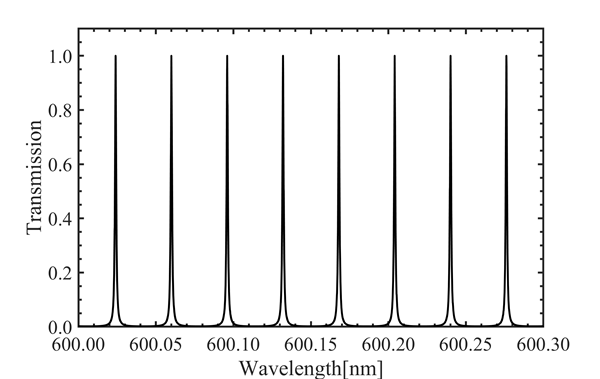High-precision calibration for astronomical high-resolution spectrograph is one of the key technologies for the exoplanet detection by the Radial velocity (RV) method. For Earth-like exoplanet, the required RV precision is 10 cm/s. The research team led by Prof. Xiao Dong at NIAOT developed a vacuum Fabry–Perot etalon-based (FPE) calibrator which has the advantages of rich in spectral lines, great stability, flexible calibrator parameters fitting for different spectrographs, easy to use and low cost.
The team investigated the transmission characteristics of FPE affected by the stability of illumination, temperature and pressure, the works were published in The Astronomical Journal (https://doi.org/10.3847/1538-3881/abf045) and Proc. SPIE (https://doi.org/10.1117/12.2607080) in May and November 2021, respectively.
Based on the previous research of fiber scrambling, the team studied the effects of the fiber near-field distribution on the transmission characteristics of the FPE via numerical simulation and experimental verification. The octagonal fiber reinforced with double scrambler would greatly improve the steadiness and uniformness of the near-field distribution, reducing the spectral drift caused by the disturbances of fiber body movement or light source coupling change.
The team developed an opto-mechanical system and a vacuum-thermostatic system to meet the requirements of a calibrator. The wavelength range and line space of the calibrator is 500-700 nm and 30GHz (0.036 nm @ 600 nm), respectively. The pressure is kept below 10-5 mbar with a vacuum system, and the temperature of the optical components in the vacuum tank is within ±10 mK during one day(24 hours), the stability of the lines is expected to be 10 cm/s.
Next, the team would study the line drift characteristics of this calibrator with an astro-comb via simultaneous calibration, and finalizing the calibration procedure and operational calibrating precision on an astronomical high-resolution spectrograph. The first author is Jun Hao, and the corresponding author is Dr. Huiqi Ye. This work was partially supported by the National Natural Science Foundation of China (Grant Nos. 11773044, 11903060) and the Operation, Maintenance and Upgrading Fund for Astronomical Telescopes and Facility Instruments, budgeted from the Ministry of Finance of China (MOF) and administrated by the Chinese Academy of Sciences (CAS).
Fig 1 The spectral drifts of different octagonal fiber (OF) configurations caused by light source coupling change and fiber body movement. (DS: Double Scrambler)
Fig 2 Diagram of the FPE-based calibrator system. 
Fig 3 The theoretical spectrum of FPE-based calibrator (30 GHz) |